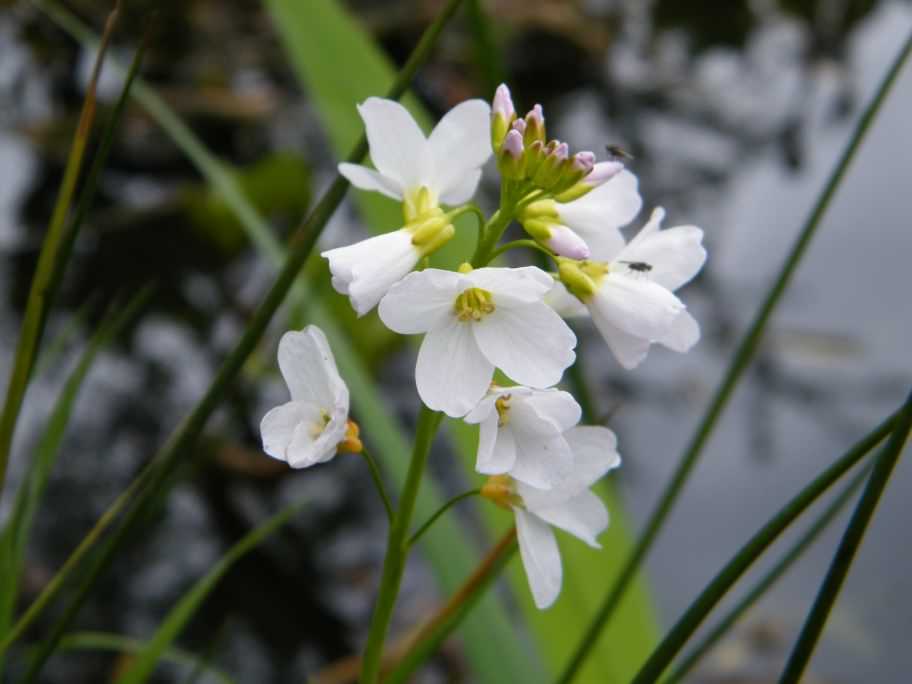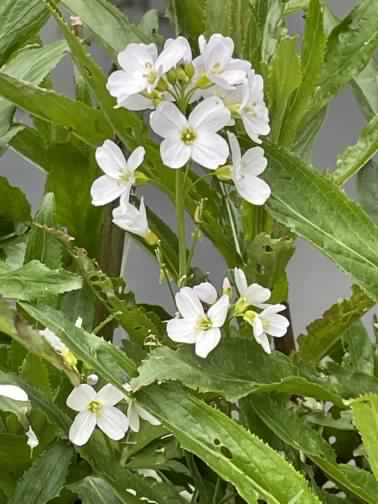
Photos ©2010–

Click any photo for a larger image


Photos ©2010–

Click any photo for a larger image

Cuckoo Flower - Cardamine pratensis
Family - Brassicaceae. Also known as -
Lady's Smock, Milking Maids, Pig's Eyes, Cuckoo Bread, Lucy Locket
Native throughout most of Europe and Western Asia, Cuckoo Flower is a herbaceous perennial plant growing to 20–60cm (8–23.5in) tall, with pinnate dark green deeply lobed leaves 5–12cm (2–5in) long with three to fifteen leaflets, each about 1cm long. Flowers are seen in April on a spike 10–30cm (4–12in) long, each flower 12–21mm (0.5–0.8in) diameter with four pale pink, mauve, rarely white overlapping petals, yellow anthers with six stamens maturing to a long thin bright green seed pod which splits distributing the seeds when ripe. The flowers droop and close up at night or during heavy rain, with May to June being the months with the greatest profusion.
Cuckoo Flower grows close to water, in damp areas, meadows and riverbanks. It propagates occasionally from buds in axils of lower leaves. It has become naturalised in North America and in Europe the plant is now under threat. It is a food plant for the Orange–tip butterfly, and is an edible, spicy, salad leaf, being peppery rather like watercress for which it has been used as a substitute. In folklore it was said to be sacred to the fairies, and was unlucky if brought indoors and not included in Mayday garlands. The Meadow Froghopper – Philaenus spumarius is attracted to the plant, its larvae forming frothy blobs on the stems commonly referred to as "cuckoo spit".
Site design ©1999– Brickfields Country Park - Privacy -